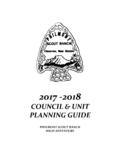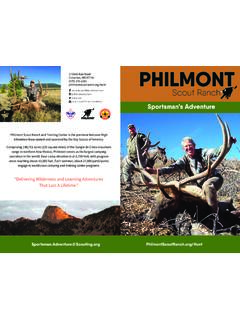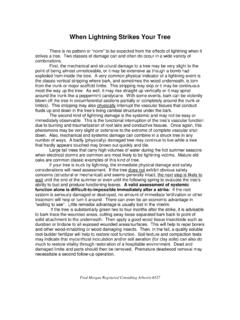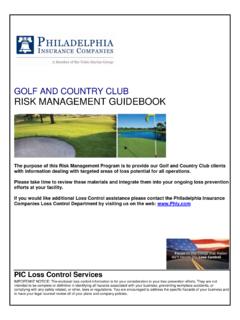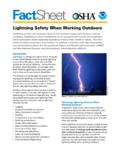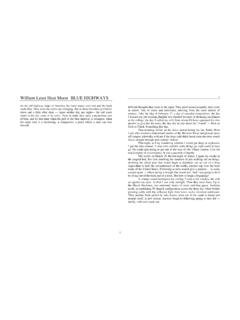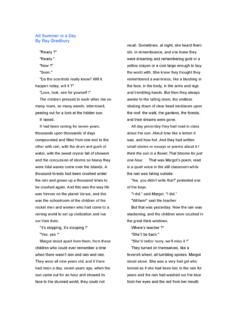Transcription of OFFICIAL PHILMONT SHAKEDOWN GUIDE, PART 2
1 OFFICIAL PHILMONT SHAKEDOWN guide , part 2 Revised September 1, 2017 Refer to the PHILMONT website and for updates to this guide and the most up-to-date information regarding your trek preparation. This guide is intended to be an all-encompassing tool for crews to utilize in order to prepare for an upcoming PHILMONT trek. It is highly recommended that crews participate in at least two SHAKEDOWN hikes prior to their trek. To help facilitate this, we have split this guide into two separate documents to allow the crew to focus on different topics on each hike.
2 In part 2 of the guide , we will cover advanced PHILMONT -specific outdoor skills, Leave No Trace, the stages of group dynamics, additional conditioning recommendations, and the events of your arrival day at PHILMONT . ADVANCED OUTDOOR SKILLS To help your crew be more prepared for your PHILMONT trek, this section will cover more PHILMONT -specific skills than the first part of the guide . FIRST AID There are many different first aid situations that your crew may experience while on the trail. Taking the required Wilderness First Aid and CPR certifications will help you to be prepared for the most common injuries and ailments, such as dehydration, blisters, heat injuries, altitude illness, and musculoskeletal injuries.
3 Dehydration o Prevent: Drink plenty of water and sports drinks during strenuous hiking and hot/dry weather - a hiker will need to drink several liters a day. Alternating between water and sports drinks will help to replace important electrolytes as well as fluids lost during strenuous hiking. o Recognize: Headache, fatigue, and nausea are early signs of dehydration. More severe signs of dehydration may include dizziness, vision changes, difficulty walking and altered level of consciousness. If a patient is unable to keep down adequate amounts of fluid, then advanced medical care may be required.
4 O Treatment: It is important to begin treating dehydration as soon as you recognize the symptoms. Prevent the dehydration from becoming worse by resting and staying out of the heat. Rehydrate with water or half-strength sports drink; full strength sports drinks may cause upset stomach in an already nauseated patient, but a half strength sports drinks will still provide needed electrolytes for the dehydrated patient. Blisters o Prevent: Blisters are caused by the heat resulting from friction and rubbing between the shoe and the foot.
5 Wearing well broken in boots and good fitting, clean hiking socks will prevent friction and blisters. Hikers should recognize a hot spot and take steps to treat them before they become blisters. o Recognize: Blisters are areas of irritated and painful skin, where fluid and blood begins to collect and can be very painful. o Treatment: If a blister forms, do not pop or drain it. Use moleskin to create a cushion to protect the blister by cutting a hole in the middle of the pad slightly larger than the blister.
6 Place the moleskin over the affected area so that the blister is surrounded by the bandage but not covered. This will reduce the friction between the blister and the sock, preventing the blister from getting any larger. If the blister pops on its own, make sure that the area stays clean and covered and watch for signs of infection. Heat Related Illness o Prevent: PHILMONT s dry desert climate can reach temperatures above 100o F, and drop close to freezing temperatures at night in higher elevations. It is important that hikers at PHILMONT be prepared with appropriate equipment and anticipate the potential for extreme temperatures.
7 When high heat is anticipated avoid hiking in the heat of the day, and take frequent breaks, avoid wearing dark or tight fitting clothing, and stay hydrated. o Recognize: Signs of heat illness can vary widely from profuse sweating, red skin, elevated temperature, and irritability, to more severe symptoms such as altered level of consciousness, and seizures. o Treatment: Sit down in shade and hydrate with half-strength sports drink to replenish fluids and electrolytes. If heat exhaustion is treated appropriately, heat stroke will not occur.
8 Heat stroke, a life-threatening condition, is when a person s body temperature gets too high and the body can no longer cool itself. Heat stroke patients may exhibit an altered level of consciousness, have seizures, and die if not treated quickly. Acute Mountain Sickness o Prevent: PHILMONT Scout Ranch is located at elevations between 6,500 and 12,500 feet. This is a higher elevation than most of the and it is not uncommon for participants to feel the effects of altitude in their first few days at PHILMONT .
9 Altitude symptoms can be prevented by ascending to altitude slowly. Participants traveling from low elevations may benefit by spending an extra day at altitude (Colorado Springs for example) on the way to PHILMONT . It is important to stay hydrated, eat a balanced diet, and get plenty of rest to allow your body to adjust to the altitude. o Recognize: Symptoms of acute mountain sickness can vary but generally consist of a headache, nausea, and feeling lethargic. Some people report insomnia and loss of appetite. In more severe cases of altitude illness, patients may experience shortness of breath at rest or change in level of consciousness.
10 O Treatment: The best treatment for altitude illness is descending to a lower altitude and allowing time to adjust. Symptoms may also be treated by staying hydrated and taking an over the counter pain medication. Ankle & Knee Injuries o Prevent: PHILMONT trails are often rough and rocky. It can be easy to slip, fall, and injure an ankle or a knee when carrying a large backpack. When hiking, it is important to watch where you are going, avoid horseplay, and wear mid- to high-top boots that provide ankle support.

